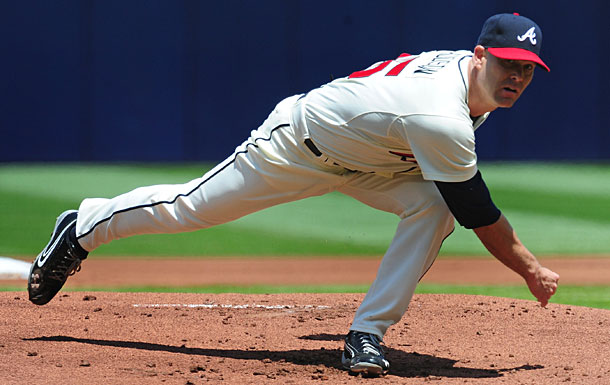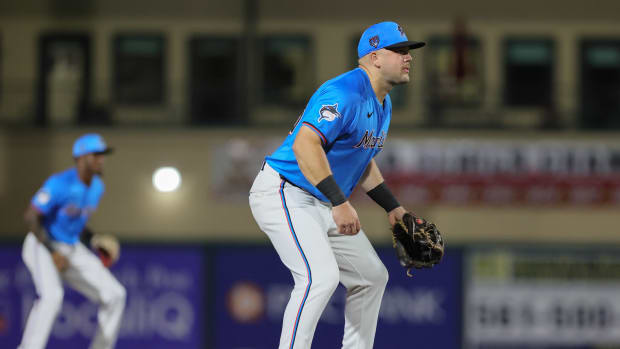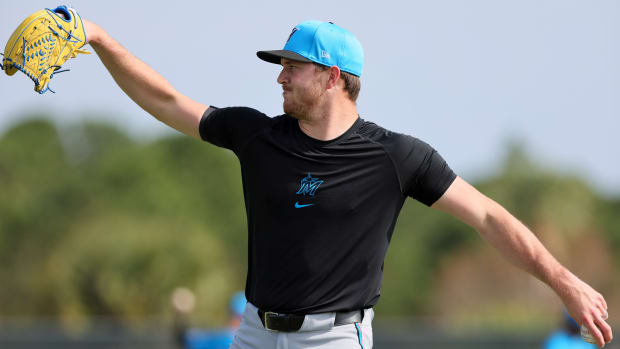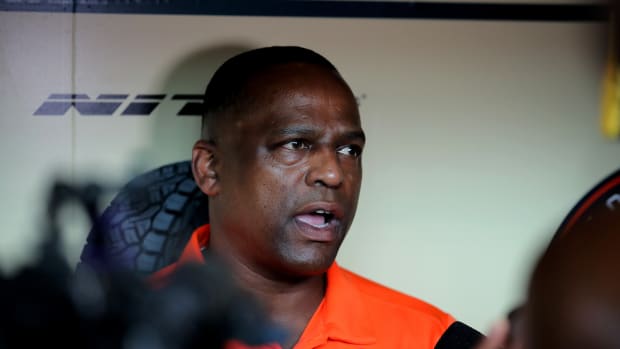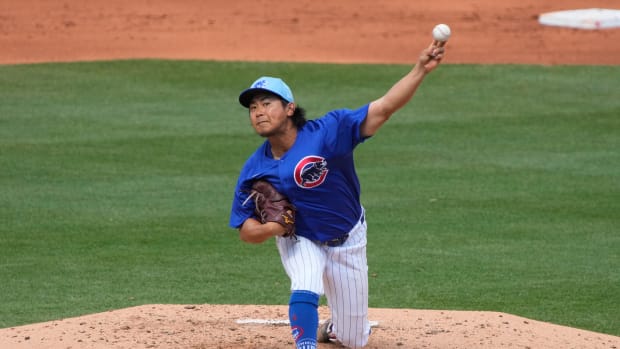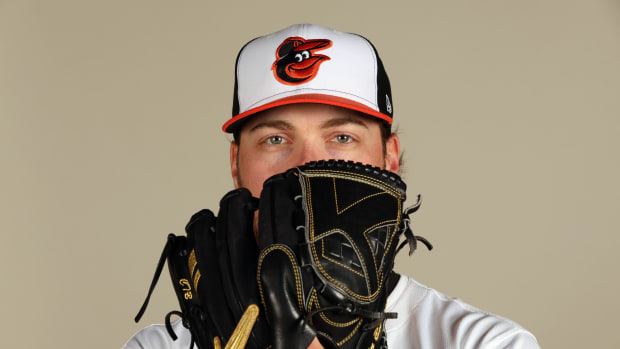Adding Tim Hudson would be a boost to Giants, but they need to do more
After nine mostly strong seasons in Atlanta, Tim Hudson is reportedly headed back to the Bay Area. (Scott Cunningham/Getty Images)
The Giants didn't even wait until the official start of free agency to begin restaffing their rotation, retaining Tim Lincecum with a two-year, $35 million deal back in October. Now they've gotten another step on the rest of the pack, reportedly agreeing with Tim Hudson on a two-year dealsaid to be worth $23 million. While the price tag seems a bit high, the move makes more sense than investing four years and more than twice as much money in some of the market's younger pitchers.
The 38-year-old Hudson spent the past nine seasons with the Braves, putting up a 3.56 ERA (116 ERA+) and only once finishing with a mark of 4.00 or higher. He averaged 27 starts and 175 innings per year during that span, surprisingly high totals given that he missed part of 2008 and most of '09 due to Tommy John surgery and didn't pitch after July 24 this past season due to an ankle injury suffered while covering first base. In the latter instance, he needed surgery to fix a broken fibula and torn deltoid ligament, one that required the insertion of a surgical screw (since removed).
A big-picture look shows that Hudson is in decline, which is no real surprise for a pitcher of his age. Since 2010, his first full season back from surgery and his lone All-Star campaign in Atlanta, his ERAs have risen in every year while his innings totals and WARs have fallen:
Year | IP | ERA | ERA+ | FIP | WAR |
2010 | 228.7 | 2.83 | 138 | 4.12 | 5.7 |
2011 | 215.0 | 3.22 | 119 | 3.36 | 2.9 |
2012 | 179.0 | 3.62 | 110 | 3.82 | 1.6 |
2013 | 131.3 | 3.97 | 97 | 3.43 | 1.0 |
Hudson's 2013 ERA and ERA+ were his worst marks since 2006, when he was rocked for a 4.86 ERA and 92 ERA+. That said, he still turned in a quality start 62 percent of the time this past season, and his peripherals — 0.7 homers, 2.5 walks and 6.5 strikeouts per nine — were all at least as good as his career marks. His 3.43 FIP suggests a bit of bad luck that led to extra runs allowed, and a closer look explains why. While his .285 batting average on balls in play was just three points above his career norm, he was strafed for a .392 mark with runners in scoring position, 112 points higher than his career BABIP under those circumstances. Given that, batters hit .330/.370/.470 with runners in scoring position against him, well beyond the .248/.344/.364 he's allowed for his career.
Hudson has generally outpitched his peripherals over that four-year stretch (3.33 ERA, 3.71 FIP) and still generates groundballs with frequency. Via FanGraphs, this year's 55.8 percent groundball rate ranked 10th in the majors among pitchers with at least 120 innings. Among pitchers with at least 500 innings since the start of 2010, only two pitchers have higher rates than his 58.4 percent mark. That ability helps him keep the ball in the park; in fact, he's 11th in the majors for 2010 and '13 in terms of fewest homers allowed per nine at 0.67. Pitching half his games at AT&T Park, he'll be particularly protected against opposite-hand hitters given the way the park suppresses lefty power.
That said, Hudson will have to avoid further decline or absence in order to be worth the full value of his contract. Via Russell Carleton's recent work at Baseball Prospectus, in 2013 teams paid just under $7.5 million per Win Above Replacement for pitchers in their seventh year and later, i.e. those with enough service time to reach free agency. At that price, Hudson would have to be worth 3.0 WAR to break even on his deal — which doesn't seem too hard until you realize that he totaled just 2.6 WAR over the past two years due to his injuries, which also included a month lost to offseason surgery to repair a herniated disc.
Still, it's better to bet that money on Hudson than spending the equivalent of last year's Edwin Jackson deal (the Cubs gave the inconsistent righty a four-year, $52 million contract) or more on any one of a number of younger free agent options. For example, Ricky Nolasco accumulated all of 5.8 WAR over the past four seasons, while Matt Garza and Bronson Arroyo — the latter a pitcher in whom San Francisco may still have interest — both totaled 7.2 and Ervin Santana 7.5. Ubaldo Jimenez topped that group with 10.3, but 7.5 of that came in 2010. As far removed as he is from his own recent high-water mark, Hudson is still a smaller, safer investment than the aforementioned hurlers, and unlike Santana or Jimenez, he won't cost the Giants a draft pick if they sign him.
Furthermore, he doesn't need to be the ace of San Francisco's staff. That job is in the hands of Madison Bumgarner, with hopes that Matt Cain (4.00 ERA in 2013) and Lincecum (4.37) can rediscover at least some semblance of their prior form. There's no guarantee of that, but the bar for Hudson's slot is lower given that it's either former teammate Barry Zito (5.74 ERA last year) or Ryan Vogelsong (5.73) whom he's replacing as the fourth starter. The team turned down the latter's $6.5 million option but may still be working toward bringing him back on a multiyear deal at a lower average salary, and it may still look to Arroyo or another outside option to round out the starting five.
Speaking of his former teammates, Hudson is said to have chosen the Giants over the A's, for whom he pitched from 1999-2004, much of that time alongside Zito and Mark Mulder as Oakland's "Big Three." He had some monster years with the A's, with a 3.30 ERA (136 ERA+) and an average of 207 innings and 4.4 WAR.






























